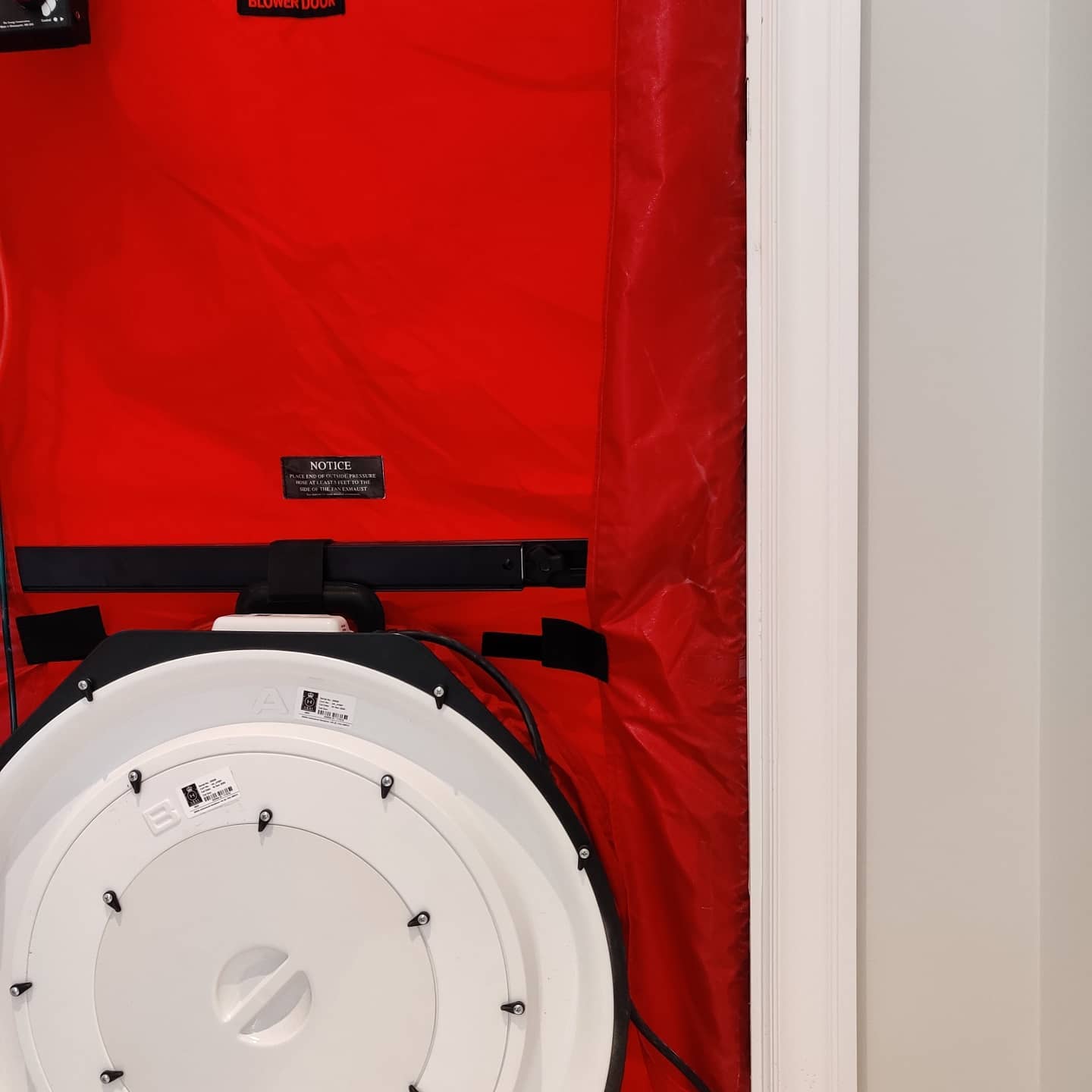
Smoke Shaft and AOV Testing
Building Compliance Testing Limited can provide you with a fast and cost effective ATTMA Accredited Air Tightness Testing across Mainland UK, in accordance with BS EN ISO 9972:2015 and CIBSE TM23.
 Smoke Shaft and AOV Testing
Smoke Shaft and AOV Testing
Smoke shafts have become a standard feature in modern multi-story commercial and residential buildings, playing a crucial role in fire safety by efficiently venting smoke from shared areas like corridors and stairwells during a fire. This enhanced visibility and reduced smoke inhalation risk are life-saving advantages, and to confirm the smoke shafts’ effectiveness, smoke shaft tests are conducted to verify their airtightness.
While most smoke shafts adhere to the industry standard Colt recommendation of a leakage rate below 3.8m3/hr/m2 at 50 Pa, specifications may vary on some projects, underscoring the importance of confirming the requirements before commencing work. Smaller envelope areas, typical of smoke shafts, can pose a higher risk of failing air-tightness tests, necessitating a robust air-tightness strategy at every construction stage.
In cases of failed air tests, the most common solution involves remedial work within the confined shaft space, often requiring intricate rope access and Confined Space Training. Given the complexity of remedial sealing, seeking consultancy advice at an early stage is advisable, a service we are equipped to provide.
Conducting an air tightness test on a smoke shaft closely resembles a standard building air permeability test, but the intricate diagnostics involved call for the expertise of a seasoned testing engineer. Like a typical building test, the shaft is assessed using a calibrated fan that can be inserted into one of the openings. For optimal results, it’s advisable to perform the test after the shaft is fully constructed, with the Automatic Opening Vents (AOVs) temporarily sealed using materials like tape, Corex, or Celotex, rather than relying on dampers. Sealing these from the inside can be advantageous, making it convenient to test even before the AOVs are installed. When addressing potential failures, access to the inner shaft is often impossible, necessitating the use of smoke-generating machines to pinpoint more significant problem areas.
Achieving the required level of air tightness in smoke shafts, given their heightened risk of failure, necessitates early consultation with experienced experts. Regardless of the building materials, a recommended approach is to treat the inside of the shaft as the primary air seal line, ensuring that the inner finish is both smooth and meticulously sealed at all junctions and joints.
If there’s an internal plasterboard finish, comprehensive sealing is essential, covering every joint and screwhead while also attending to junctions and penetrations.
In cases where ductwork or structural elements penetrate the shaft’s interior line, it is crucial to instruct contractors on the significance of creating a continuous, effective seal, particularly in hard-to-reach areas post-installation, such as when a steel support is flush against a wall junction.
Frames or architraves encircling the Automatic Opening Vent (AOV) openings often serve as potential leakage paths and, as such, should receive a thorough mastic seal around their entire perimeter on the inner side of the shaft.
Cable penetrations require proactive and effective sealing throughout the construction process, with a strong emphasis on all contractors understanding the critical nature of this task, particularly in compact smoke shafts. It is advisable to discourage large bundles of cables in favor of individual cable penetrations, making it easier to create a reliable seal with mastic.
For conduits, it is best practice to not only seal around their wall penetrations but also within the conduit, ideally by opening the conduit where it passes through the wall for optimal results. This practice ensures a high-quality seal. Furthermore, cable penetrations behind electrical fittings and control panels should be sealed effectively before closing the panel, with installation contractors fully aware of the importance to avoid costly and time-consuming call-outs.
Other Services
– Part L Compliance
– Room Integrity Testing
– Smoke Testing
– Multi-fan Commercial Testing
– Air Tightness Design Reviews
– Plenum and Raised Access Testing (RAF) to BG65 Standards
– Passivhaus Testing
– Air Sealing in preparation for Air Tightness Testing
Frequently Asked Questions
What is required for an Air Tightness Test?
- Floor Plans and Section Drawings
- Site Address and Contact
- A copy of the Design-stage SAP report for dwellings
- A copy of the Design-stage BRUKL report for buildings other than dwellings i.e retail units
When do I know when I am ready for an Air Tightness Test?
- We will carry out the air tightness test once the unit is past the second fix stage and the following
elements within the unit are completed: - All walls are finished, including cladding, windows and doors.
- Skirting boards are fitted and sealed around
- Sockets and lights are fitted and completed, in some cases caulked around (mention potty pads)
- All plumbing work is completed and gaps or holes around the service pipes are sealed.
- Leakage around the door frame, threshold and window boards are sealed.
What am I allowed to temporarily seal for an Air Tightness Test?
We’re friendly and knowledgeable bunch so why not get in touch for a chat. You can always contact Building Compliance Testing with any questions through phone, email or our online chat service.
Don’t worry, we don’t charge for advice given over the phone, so why not ask for a free quote?
01621 493 594 | contact@buildingcompliancetesting.com
Let's Talk About Your Project?
Questions? We've Got Answers!
Find below a list of common frequently asked questions about Air Permeability Testing.

